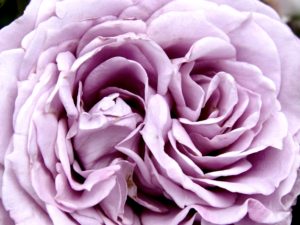History of Rosewater
Did you know rosewater once predominated the world of flavorings? Its use is traced back as early as 4th century Persia, with the distillation process we use today attributed to the Persian chemist, Avicenna somewhere in the middle ages. Rosewater eventually made it’s way to Europe and Asia. The ancient Greek, Romans and Phoenicians considered public rose gardens of great importance to a society. A point upon which we heartily agree! In colonial America, rosewater was the favored essence, and in far greater use than vanilla, a thing of rarity to early colonists.
Can Rosewater Help Replace Some of Vanilla’s Many Tasks?
Well, it seems things haven’t changed that much and all of the recipes that once called for rosewater may be more in fashion. Vanilla prices continue to rise because harvesting of vanilla beans – products of tropical vanilla orchids – is a manually intensive process. Madagascar vanilla orchids, the favorite of three vanilla types (also including Tahitian and Mexican) are often hand pollinated, and harvested one by one for a manual drying process. Pricing is rising so much that worries over theft directly from vanilla fields, are causing farmers to harvest early to protect their crops. Add to all of this the impact of global warming on vanilla and continually increasing demand, and we are not looking at the flavoring getting any more affordable or available.
Give Rosewater A Chance
Thus, back to the gentle rose. Rosewater has often gone out of favor after a bad experience of eating what tastes like perfume – old perfume. This is not the fault of rosewater, but poor quality, and additives to what is a readily available and beautiful, though strong flavoring. Good rosewater is obviously floral, but a beautiful floral, think of orange or apple blossoms, NOT potpourri. Some of our favorite uses are coupled with fruits or cream to add a subtle something, similar to the way the scantest amount of citrus zest or ginger changes flavor. Think of the scent of peaches, plums or other stone fruits warm and fresh picked which exude floral, fruity, and sometimes the barely-there scent of almond. This is a genteel flavoring for refined dishes and drinks.

Making Your Own Rosewater
Distilling: This sounds complex. It is not at all. Distilling simply creates an infused steam that gathers a more intense flavor and scent that if the roses were boiled in water, altering the quality.
Equipment and Ingredients:
1 large stock pot with matching cover
2 heat safe glass bowls that both fit completely inside the perimeter of the pot with a little room to spare
6 cups unsprayed rose petals*
6 cups room temperature / tepid water**
About 6-12 cups of ice
1 quart or larger plastic zip bag
Glass bottle with cover, cap, or cork to store rosewater (vinegar bottles and canning jars work well)
Place your pot on the stove, burner off.
Invert one of the bowls at the bottom center of the pot.
Sprinkle the rose petals into the pot around the bowl.
Add the water.
Place the second glass bowl right side up on the first, inverted bowl.
Invert the pot lid and cover the pot, (which will allow the steam that rises to collect and fall into the bowl)
Place about 2-3 cups of ice in plastic zip bag and place on top of the inverted lid. (This will allow the steam to condensate and fall instead of being released as steam from the pot.)
Turn the burner on medium, and bring to a gentle simmer for 90 minutes.
You will need to remove the melted ice 3-4 times during the process. Simply pull off the plastic zip bag, empty, refill with ice and replace.
After 90 minutes, you will have about 8-12 ounces of rosewater.
Remove the rosewater bowl carefully and fill the your storage container, allow to cool, cover and refrigerate for up to 6 weeks.
* If you have a choice of rose petals, pick those that are most pleasantly fragrant to you. Roses have a wide variety of scents from strong / old rose, to apricot-like, violet, and more. If you have the opportunity, also pick them as early in the day as possible, when they have just absorbed morning moisture and are most fragrant.
**If your tap water is highly mineralized (hard water) or chlorinated water, you will want to use distilled water which can be found at most pharmacies and grocery stores.
Storage
Store in the refrigerator for up to 6 weeks.
Uses
If put in a spray bottle, rosewater has loads of uses to make the most of its gentle rose scent.
Rosewater also makes a refreshing facial spray mixed with water or alone. It can be used as a home scent for linens.
In Recipes
- A little rosewater goes a LONG way. Too much without the balance and a dish can start to taste like perfume. Start off with ½ teaspoon in a recipe and add from there. As a rule, though different flavors, use about ½ as much rosewater as you would use vanilla extract.
- Use rosewater to flavor drinks from lemonade to cocktails.
- Make a sugar water syrup and add rosewater to add to drinks
- Add to a small amount of honey and refrigerate (honey does not need refrigeration, but the rosewater does)
- Add rosewater to ice creams or whipped cream
- Add to custards and cheesecakes
- Use in shortbread recipes
- Add to poaching liquid for berries, stone fruits, apples and pears
- Add to buttercream frostings
- Use in meringues and pavlovas
- Rosewater and pistachios are a classic combination always worth a revisit in deserts
Specific Recipes
Rose Scented Poached Peaches with Ricotta Cheesecakes



